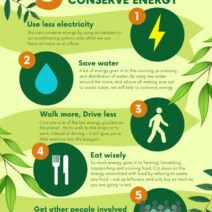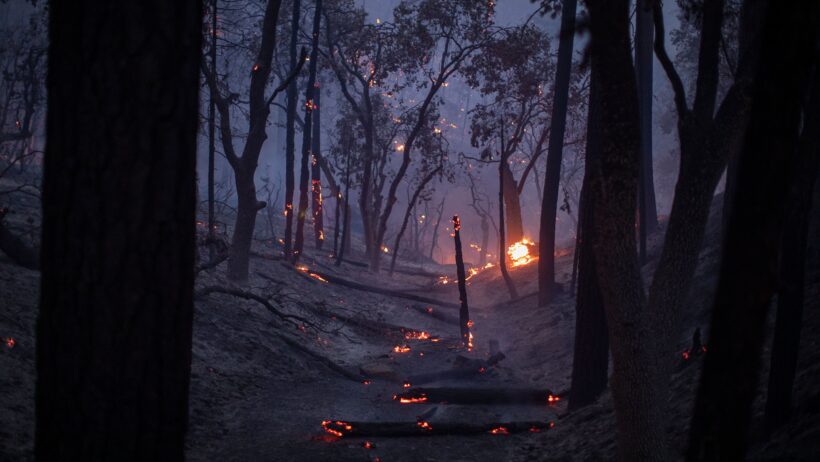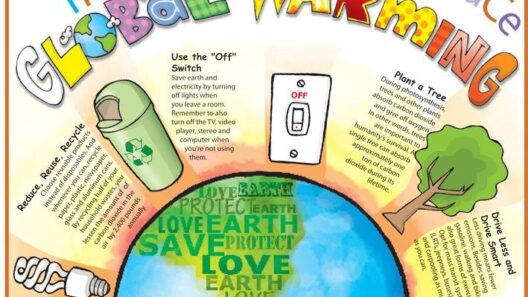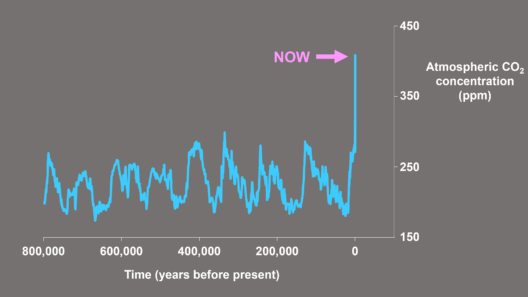Amidst the charred landscapes of California and the smoke-tinted horizons of Sevier County, one question looms ominously: Did global warming play a pivotal role in the recent fires that devastated these regions? To answer this, we must first dissect the nature of wildfires, the climate phenomena influencing them, and the intricate web of causality binding them to the broader narrative of climate change.
Wildfires, while a natural occurrence, have become increasingly catastrophic due to a confluence of factors—including a warming climate, prolonged drought conditions, and an accumulation of combustible vegetation. In both Los Angeles and Sevier County, the environmental conditions prior to the fires created a perfect storm for disaster. Increased heat, lower humidity, and prolonged dry spells are tantamount to a ticking time bomb, one that has been receiving little attention until it erupts.
Global warming, a direct consequence of anthropogenic activities, has increased the global average temperature significantly over the past century. This intensification changes local and regional climates, resulting in longer and more severe fire seasons. The Los Angeles fires illustrate this troubling reality. Higher temperatures lead to earlier springs and prolonged summers, supporting the ideal environment for wildfires to flourish. In essence, as the planet warms, risk factors converge, resulting in devastating fire behavior.
In Sevier County, the influence of climate change can be similarly discerned. Historically characterized by lush landscapes and adequate moisture, the area has faced unprecedented drought. As temperatures escalate, soil moisture levels dwindle, and vegetation becomes drier and more prone to igniting. This phenomenon is compounded by the increasing frequency of severe weather events, including intense thunderstorms that can introduce the very lightning strikes which ignite wildfires.
Moreover, the ecological changes wrought by climate change extend beyond mere temperature increases. Altered precipitation patterns can amplify wildfire risks. In regions where rainfall has become sporadic, the ecosystem fails to rejuvenate adequately, leading to an alarming buildup of dry biomass—a crucial ingredient for catastrophic blazes. The weight of evidence suggests that global warming has reshaped the fire regimes in both regions, tilting the scales toward an increased incidence of wildfires.
It is essential to understand that while climate change serves as a significant catalyst for wildfires, it does not act alone. Land use practices—such as urban expansion, forest management policies, and fire suppression strategies—also play critical roles in modulating fire dynamics. The expansion of urban areas into wildland areas has increased the intermingling of human habitation with natural landscapes, creating what experts refer to as the “wildland-urban interface.” In this zone, the risks of fires become exacerbated, not solely because of climate factors but also due to human-induced vulnerabilities.
The La Niña and El Niño phenomena also demand attention in this discussion. These climate oscillations, driven by sea surface temperature anomalies in the Pacific Ocean, can incite drastic changes in weather patterns, including alterations to precipitation and temperatures. As this global backdrop evolves, its impacts are felt locally—meaning that the wildfires in areas like Los Angeles and Sevier County cannot be detached from these broader climatic influences.
As we delve deeper into causality, it’s critical to examine the patterns of fire occurrence over time. Reports indicate that both the frequency and intensity of wildfires are on an upward trajectory in many parts of the world, including the American West. This upsurge is a clarion call for rigorous attention to the factors at play. Scientists and researchers are increasingly documenting correlations between periods of heightened anthropogenic greenhouse gas emissions and significant wildfire outbreaks. In other words, the fires are not merely random occurrences; they are symptomatic of a larger, systemic crisis.
Nevertheless, while it is tantalizing to pinpoint global warming as a definitive cause, it is more prudent to consider it as part of a larger ecosystem of influences. The interplay between climate factors, human decisions, and land management policies creates a multifaceted narrative that resists simplistic explanations. Addressing wildfire risks necessitates a comprehensive framework, one that considers both climate and locally specific factors, unearthing new questions about resilience, adaptability, and future preparedness.
Ultimately, the recent fires in Los Angeles and Sevier County serve as poignant reminders of the changing world we inhabit. They illustrate the tangible and often devastating consequences of climate change. As communities grapple with the aftermath, they must confront the broader implications of rising temperatures and shifting climate dynamics. As understanding deepens and awareness grows, the pathway to fostering resilient communities in the face of climate crisis becomes clearer.
The critical takeaway is that while global warming undoubtedly influences wildfire behavior, addressing the problem requires a nuanced understanding of both natural and human systems. To navigate the future, proactive measures—including innovative land management strategies, community preparedness initiatives, and a commitment to reducing greenhouse gas emissions—are imperative. Only then can we aspire to mitigate the risks of devastation, drive policy changes that reflect the realities of climate science, and ensure a safer, more resilient future.








